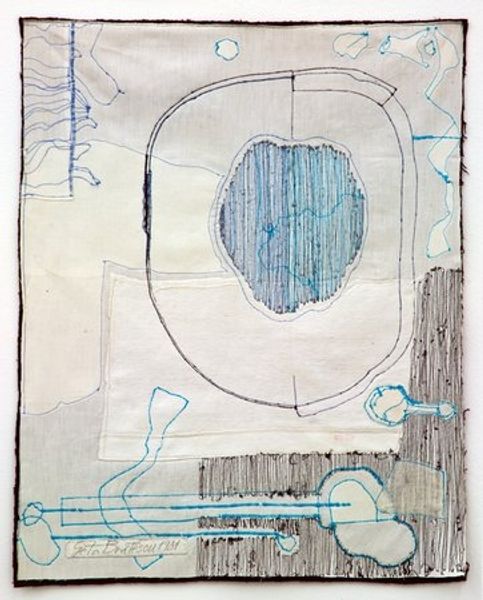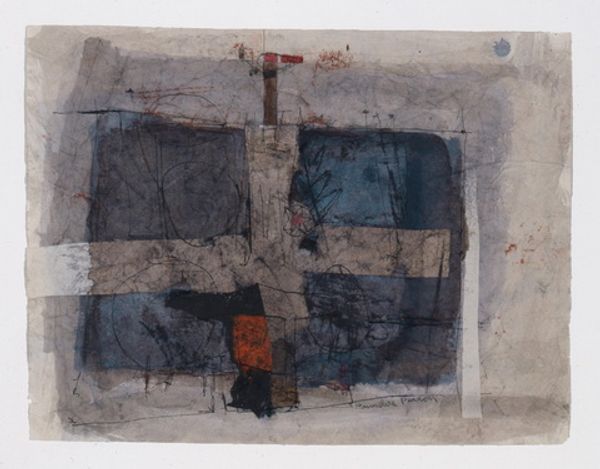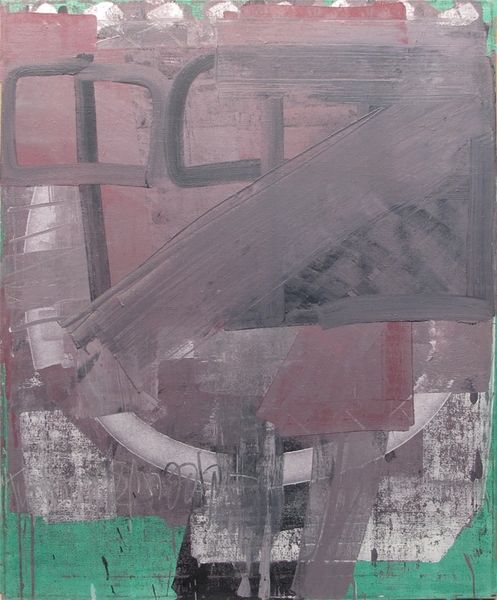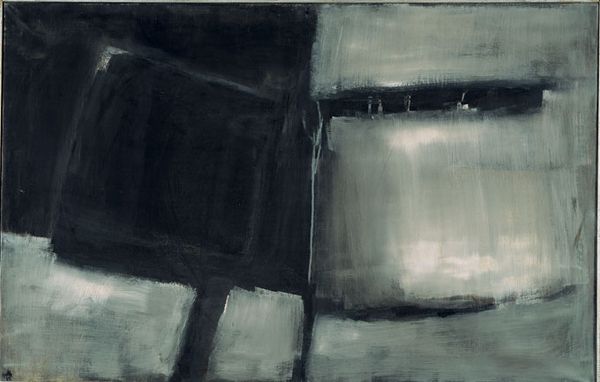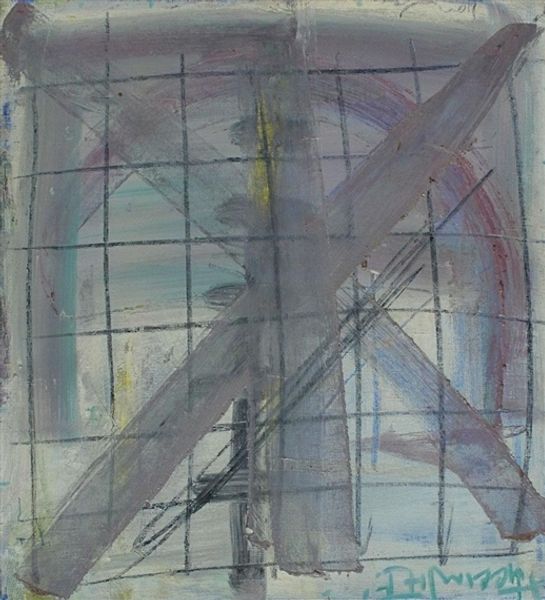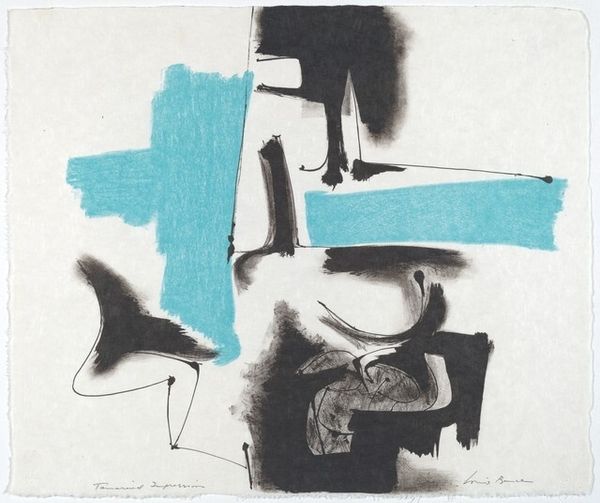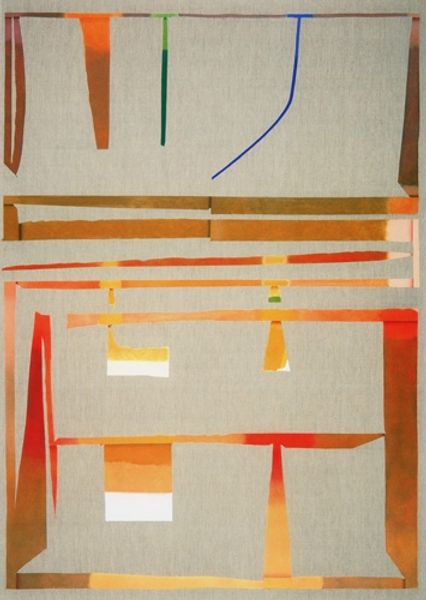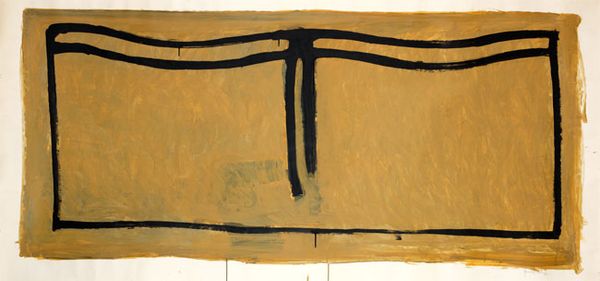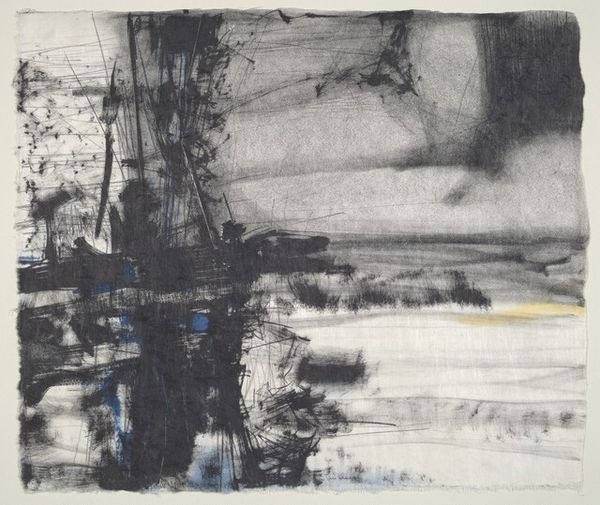
mixed-media, painting, acrylic-paint, paper, graphite
#
abstract-expressionism
#
mixed-media
#
painting
#
acrylic-paint
#
paper
#
form
#
abstraction
#
line
#
graphite
#
mixed media
#
modernism
Copyright: Jimmy Ernst,Fair Use
Curator: Jimmy Ernst created this piece, "Abstraction in Green and Black," in 1946. He worked with mixed media here: acrylic paint, graphite, and other elements layered on paper. Editor: My first impression is a sense of serene unease. The teal and umber hues are calming, yet the geometric forms feel unresolved, hovering between clarity and ambiguity. It is an interesting dynamic. Curator: Considering its date, this piece likely reflects the post-war experimentation with abstraction. Ernst, son of Max Ernst, may have been grappling with the changing social landscape through innovative use of media. Look at how the texture of the paper itself is integrated into the work! The subtle layering builds a material complexity. Editor: Indeed, the tension in "Abstraction in Green and Black" seems key. I see fragmented architectural motifs and vague biomorphic suggestions battling for dominance. It is as if Ernst were representing a world coming undone or a reality still cohering. Curator: The use of relatively new acrylic paint is fascinating. He harnesses the potential of acrylic to experiment with washes and linear work that almost denies the inherent weight acrylic often carries in abstract expressionism. How did this relatively new mass manufactured material influence and inspire his studio process and creative ideas, I wonder? Editor: Symbolically, the teal reminds me of the unconscious or the dream state, set in stark juxtaposition to the man-made geometric shapes and imposed architectural structure rendered in graphite and black, and the implied social spaces. Could it reflect an internal psychological conflict of structure versus dreams, maybe of reason vs. desire, a microcosm of a shifting world view? Curator: I see this work as indicative of a time when material invention, even at a domestic scale in the artist's studio, reshaped aesthetic ideas and understandings of modern experience and being. Ernst handles these elements in ways that foreground making and unmaking. Editor: Agreed, and within the fragmented lines and shapes of "Abstraction in Green and Black" are reflections of anxieties and hopes – visual echoes still resonating today. Curator: Precisely, a convergence of physical production, social change and artistic intent made palpable through the mediums and forms that defined the postwar world. Editor: In that sense, it becomes not just an abstract representation, but a kind of symbol, too: holding cultural meanings beyond pure form.
Comments
No comments
Be the first to comment and join the conversation on the ultimate creative platform.



